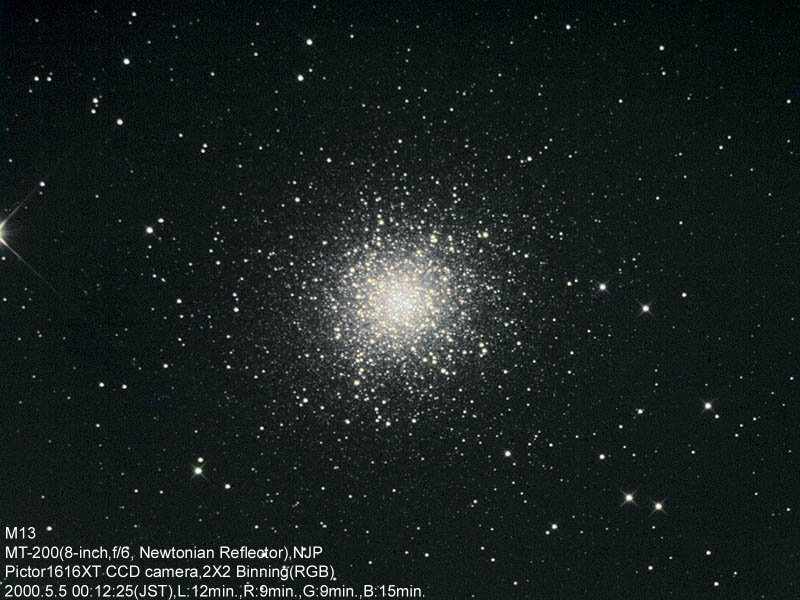
The Constellation Hercules


|
The Constellation Hercules |

|

The Butterfly is estimated to be about 100 million years old, M13 is estimated at about 10 BILLION years old, making it so old that it formed before the disk of the Milky Way galaxy formed! While the Butterfly cluster has maybe 100 stars in it total, M13 has no less than 1 million stars. The Butterfly cluster is about 1200 light-years away and about 20 light-years across, M13 is 20,000 light-years away and 160 light-years across.
These numbers are typical, so globular clusters are much, much bigger than open clusters, and they are much, much older - some are nearly as old as the universe!

 Back to Lyra
Back to Lyra
|
 Go to Summer Index
Go to Summer Index
|
 On to Draco
On to Draco
|
Your questions and comments regarding this page are welcome.
You can e-mail Randy Culp for inquiries,
suggestions, new ideas or just to chat.
Updated 11 November 2011